BESTIARY (19D)
By:
January 22, 2022
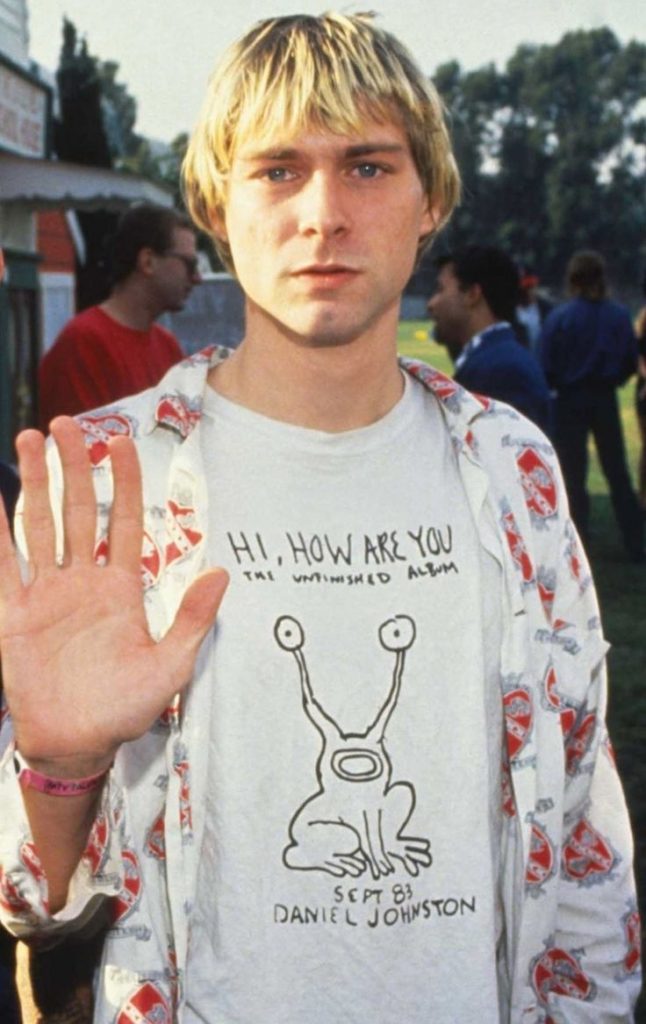
One in a series of posts — curated by Matthew Battles — the ultimate goal of which is a high-lowbrow bestiary. This particular installment is in four parts.
All “legs” of this BESTIARY installment: 1904–1933: BUMPTIOUS FROG | 1934–1963: RAPSCALLION FROG | 1964–1983: FREE-SPIRIT FROG | 1984–2003: PALIMPSEST FROG.
PALIMPSEST
Within the context of pop-culture anthropomorphic frogs, I’ve dubbed the final two decades of the twentieth century the “palimpsest” era — because at this point we begin to see pop culture (more or less in its entirety) fold back upon itself. The frogs we’ll encounter in this 1984–2003 “leg” of the FROG installment are bumptious (like 1904–1933 frogs), rapscallions (like 1934–1963 frogs), and free spirits (like 1964–1983 frogs).
In the Eighties and Nineties, we no longer find an emergent paradigm supplanting a dominant one. Instead, it’s a palimpsest; nothing is allowed to fade away. If (as this BESTIARY series installment seeks to demonstrate) the pop-culture frog’s metamorphoses have always mirrored changes in American society and culture, then — beginning c. 1984 — we can say that here is where American culture begins to become recursive.
There were recursive aspects of the culture previously… but in the Eighties and Nineties they metastasized. During this era, bygone anthropomorphic-frog paradigms were galvanized and made to caper, zombie-like, for a jaded public apparently no longer interested in cultural transformation.

(Mel Brooks — who satirized bygone cultural forms and norms, rather than merely reviving them — tried to warn us about the possibility of this pernicious development via the galvanized, capering “Puttin’ On the Ritz” scene in 1974’s Young Frankenstein. Why didn’t we pay attention?)
Hey, recursion can be fun! I was there in the Eighties and Nineties, and I enjoyed many recursive entertainments. However… when one compares the zombified, ironized pop-culture frogs in this, the final “leg” of the FROG installment, with the autochthonic pop-culture frog paradigms of the past, one might feel… cheated.
If near the end of the previous installment in this “leg” of the FROG installment we saw the emergence of the badass pop-culture frog, during the Eighties we’ll encounter many more bad-ass frogs. Like other puffed-up action heroes of the Eighties, these frogs are part bumptious (they think highly of themselves), part rapscallions (they are chaos agents, leaving destruction in their wakes), and they exude ’tude. This description also holds for certain Eighties pop-culture frogs — Big Max and his gang, say — who aren’t action heroes.
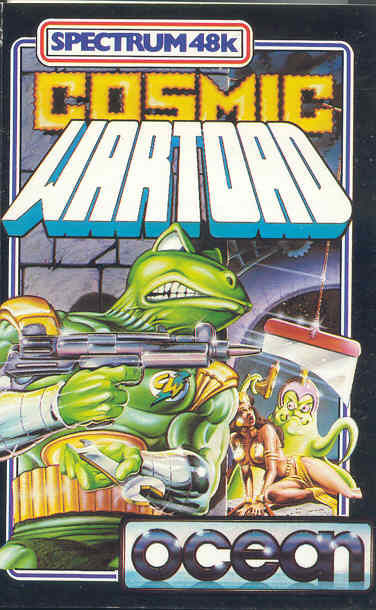
COSMIC WARTOAD: Cosmic Wartoad is a ZX Spectrum videogame released in the UK in 1985. The player controls the titular Cosmic Wartoad as he attempts to prevent his queen from being destroyed by the Rygellian Slime Beasts’ slowly descending Sludge Saw.
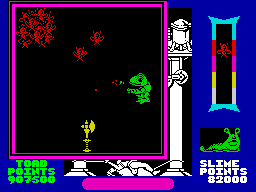
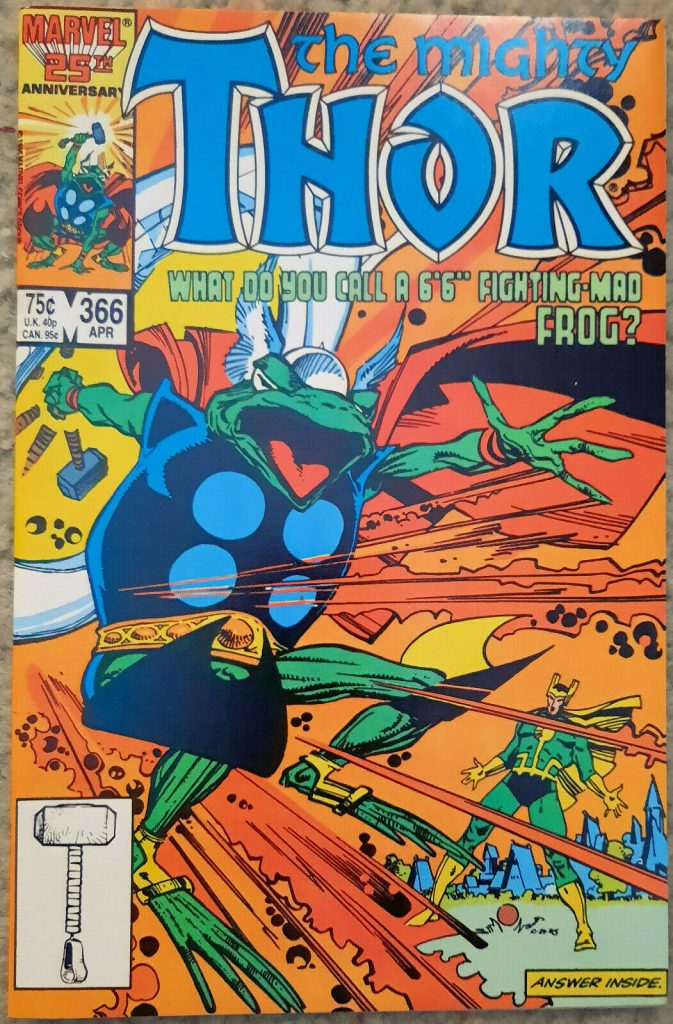
THROG: “Throg” (that is, Frog Thor) is a human who has been transformed into a frog — known by the Lewisian name of Puddlegulp. When Thor is transformed into a frog by Loki, he is befriended by Puddlegulp… who then finds a sliver of Thor’s hammer, and becomes a Thor-like frog. Or a frog-like Thor.
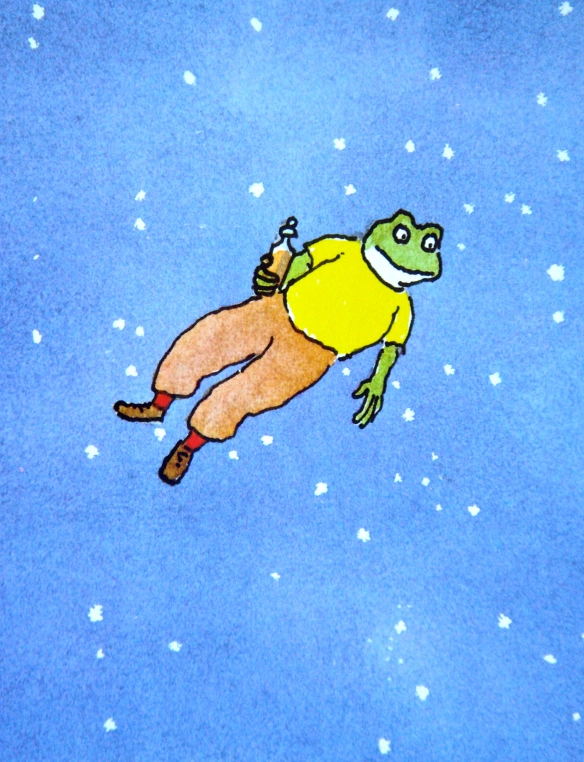
William Steig’s Gorky Rises — 1986. I haven’t read this book.
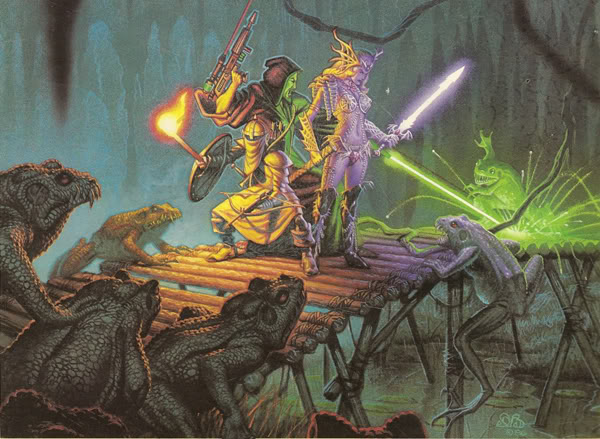
In this series installment’s first “leg,” I mentioned the 1931 Lovecraft story “The Shadow Over Innsmouth,” which introduced us to the Deep Ones — humanoid beings with frog-like bodies and croaking voices. There is a Lovecraftian back story — involving a religious sect attempting to breed superhuman frog-creatures — to Temple of the Frog, a 1986 Dungeons & Dragons module. Here’s a scan.
File this one under FRIGHTENING FROGS.
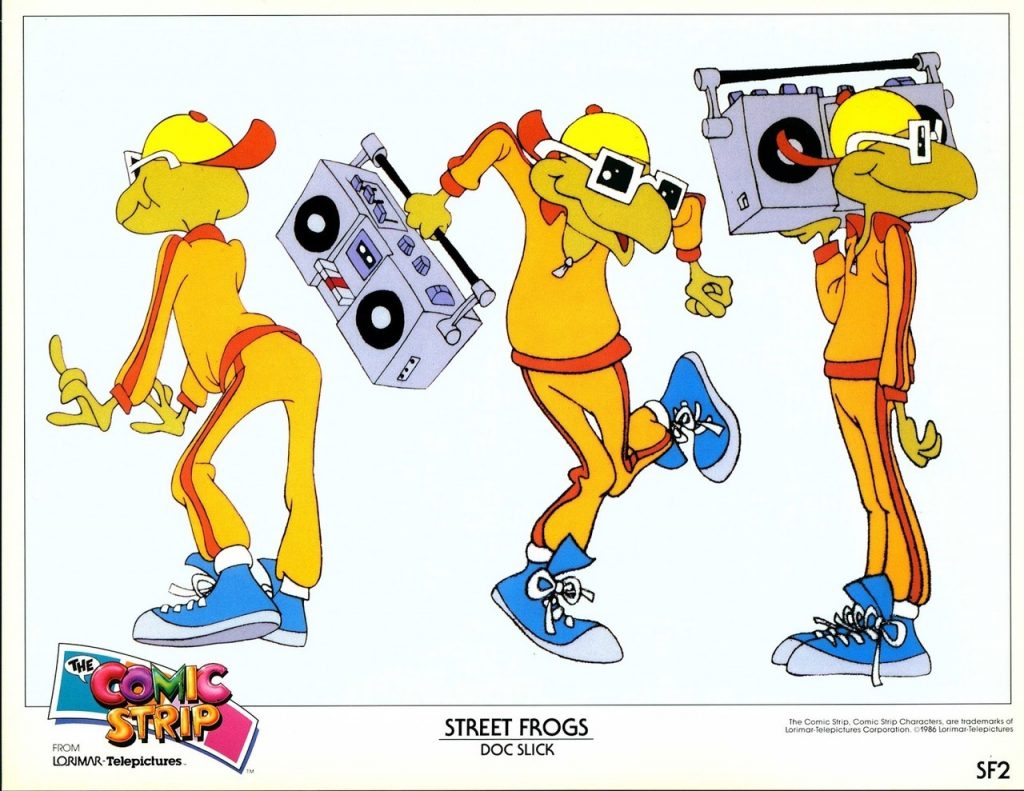
BIG MAX: I was in college, in 1987, so I missed the short-lived cartoon show The Comic Strip — the last TV series produced by Rankin/Bass Productions. It featured four rotating cartoon segments, one of which — Street Frogs — depicted the antics of Big Max and his gang of teenaged, streetwise frogs.
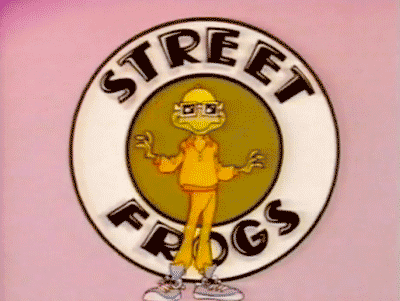
Apart from Rankin-Bass regular Bob McFadden, who voiced Big Max, this segment featured an all-African-American cast.
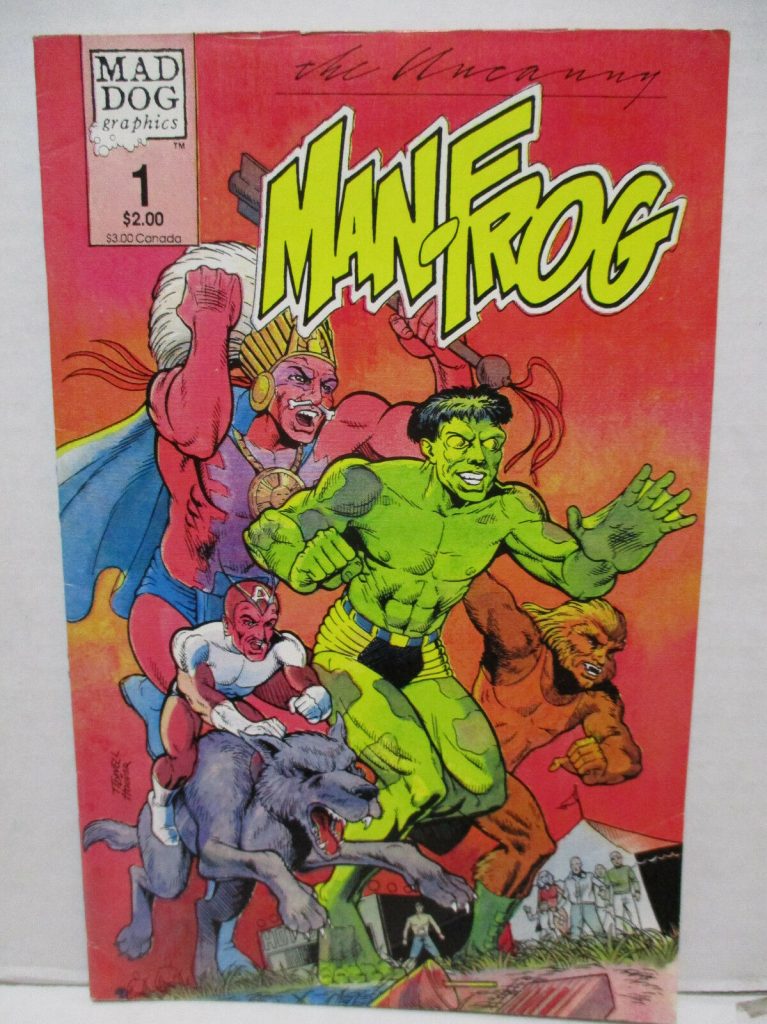
MAN-FROG: John Wooley, who is perhaps best known in the world of comics for having written the script for the graphic-novel adaptation of Ed Wood’s Plan Nine from Outer Space, also co-created such independent comics as The Twilight Avenger, The Miracle Squad, and (in 1987) The Uncanny Man-Frog. I haven’t read it…
PS: Adam McGovern points out that Howard the Duck once faced off against Garko, the Man-Frog.
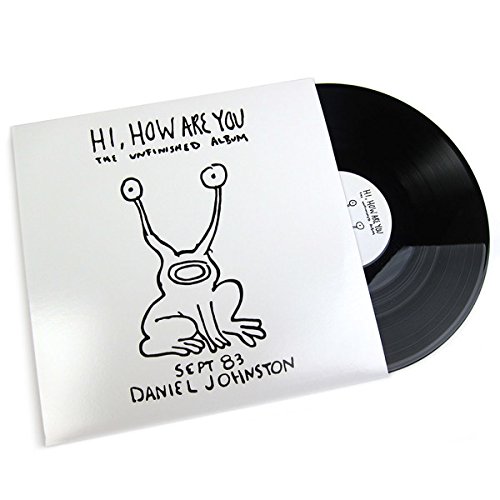
JEREMIAH THE INNOCENT: In 1988, singer-songwriter Daniel Johnston, who’d recently become a well-known figure in the outsider, lo-fi music scene in Austin, Texas, self-produced Hi, How Are You, a music cassette album he’d recorded several years earlier. Released on Homestead Records that year, the collection of clunky, amateurish, but emotional and engaging songs was the first of Johnston’s albums to be given a widely distributed release as a vinyl LP. The LP’s cover was illustrated with Johnston’s drawing of Jeremiah the Innocent — a frog character he’d dreamed up whose name pays homage to the eponym of Three Dog Night’s hit song “Joy to the World.”
Jeremiah the Innocent is a free-spirited frog — but there’s a layer of irony, here, that we don’t find in this installment’s previous “leg.”
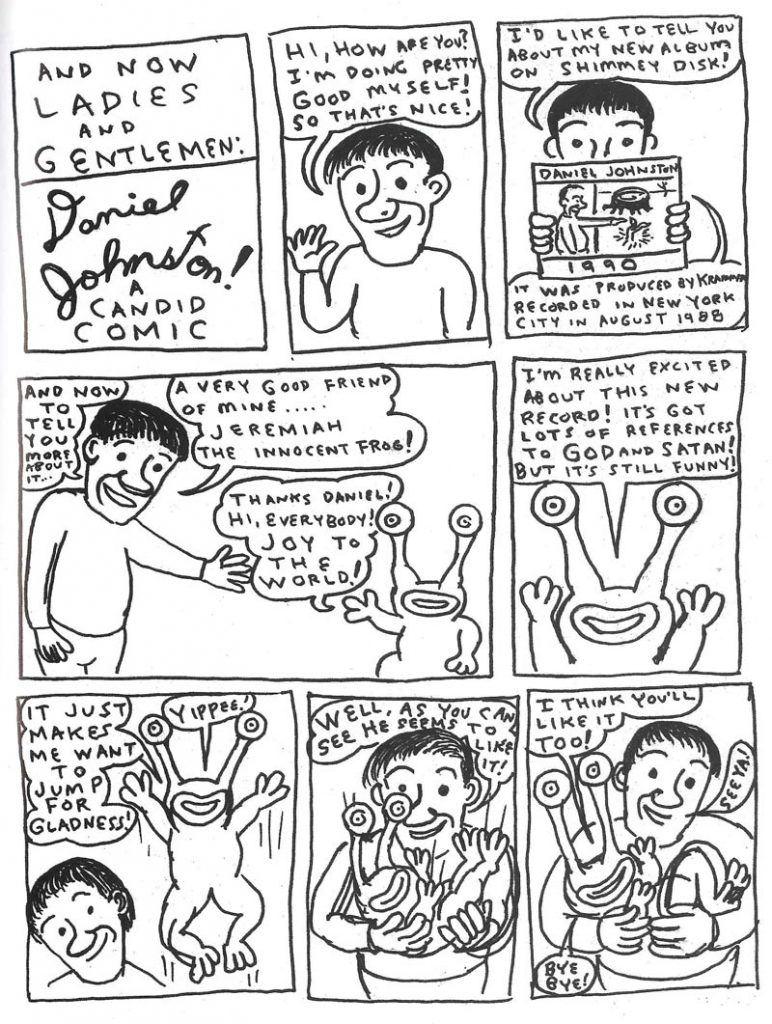
Johnston’s album received widespread attention thanks to a shirt sported by one of Johnston’s fans, Nirvana frontman Kurt Cobain.
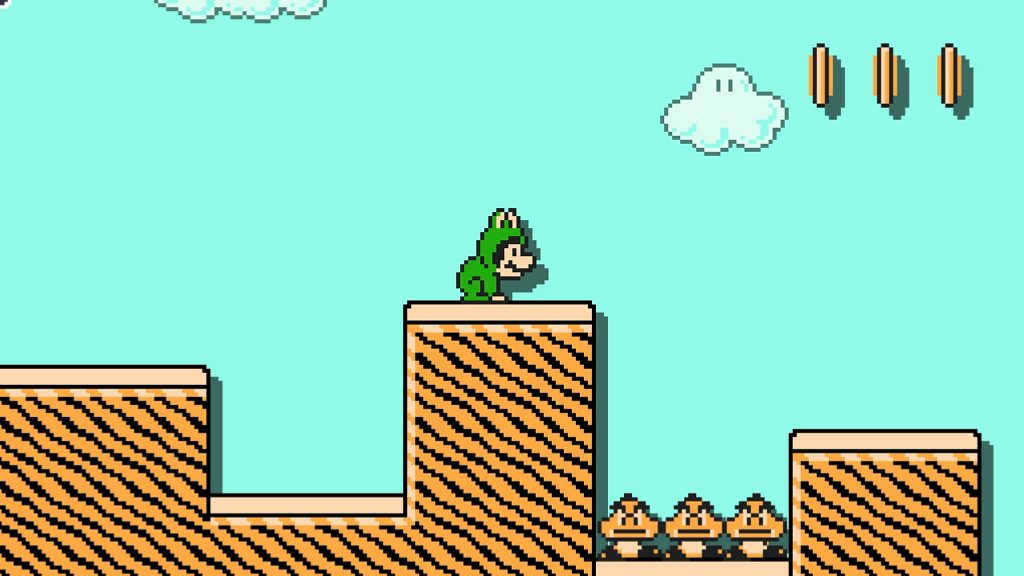
FROG MARIO: Super Mario Bros. 3, a platform game published by Nintendo in Japan in 1988, and in North America in 1990, debuted a “power-up” known as the Frog Suit. It transforms Mario or Luigi into a (badass, action-hero) Frog Mario or Frog Luigi. While wearing the suit, Mario or Luigi can jump higher, swim faster, and resist water currents better. On land, they can only hop.
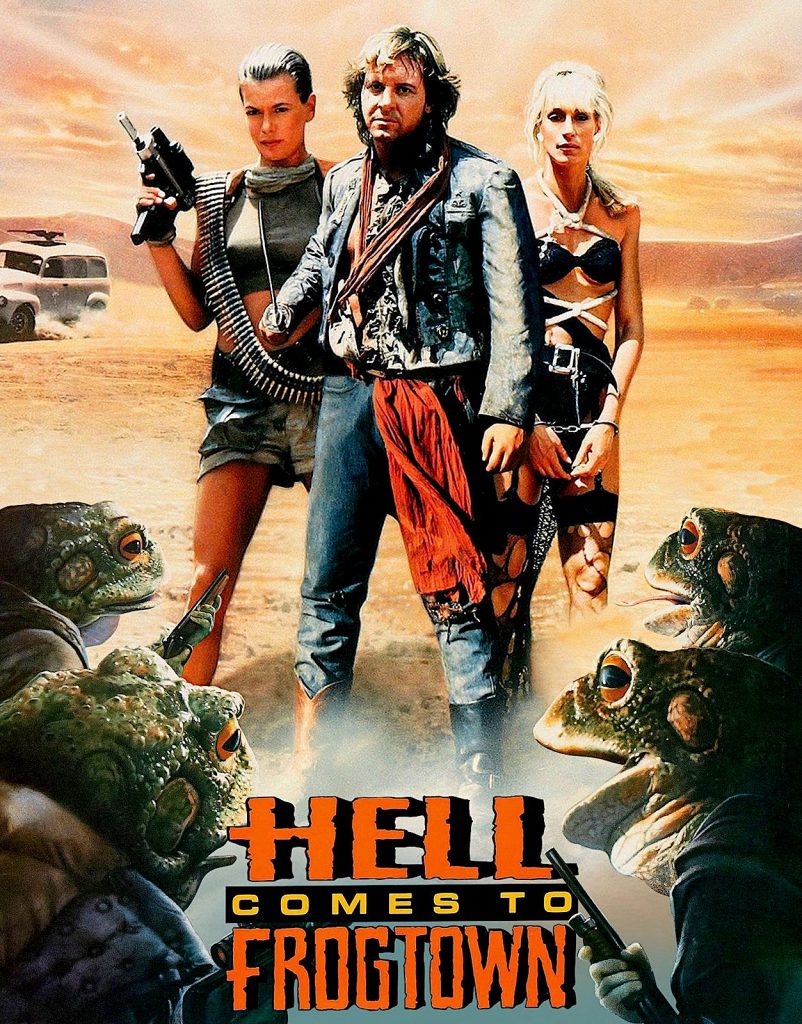
Hell Comes to Frogtown is a 1988 B-movie by Donald G. Jackson. It stars (badass, action-hero) pro wrestler “Rowdy” Roddy Piper. In the post-apocalyptic future, a group of mutant amphibians who have been exiled to the desert capture a group of women to use as sex slaves.
In the sequel, Frogtown 2 (1992), the Mutant-Frog leader of Frogtown kidnaps a professor and forces him to make a serum that will turn everyone into mutant amphibians.
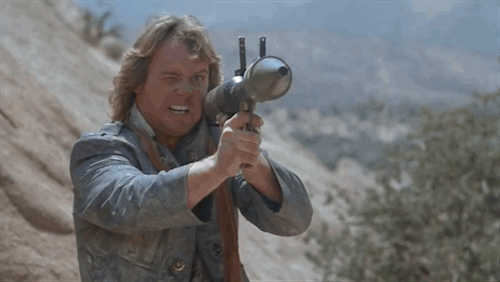
File this one under FRIGHTENING FROGS.
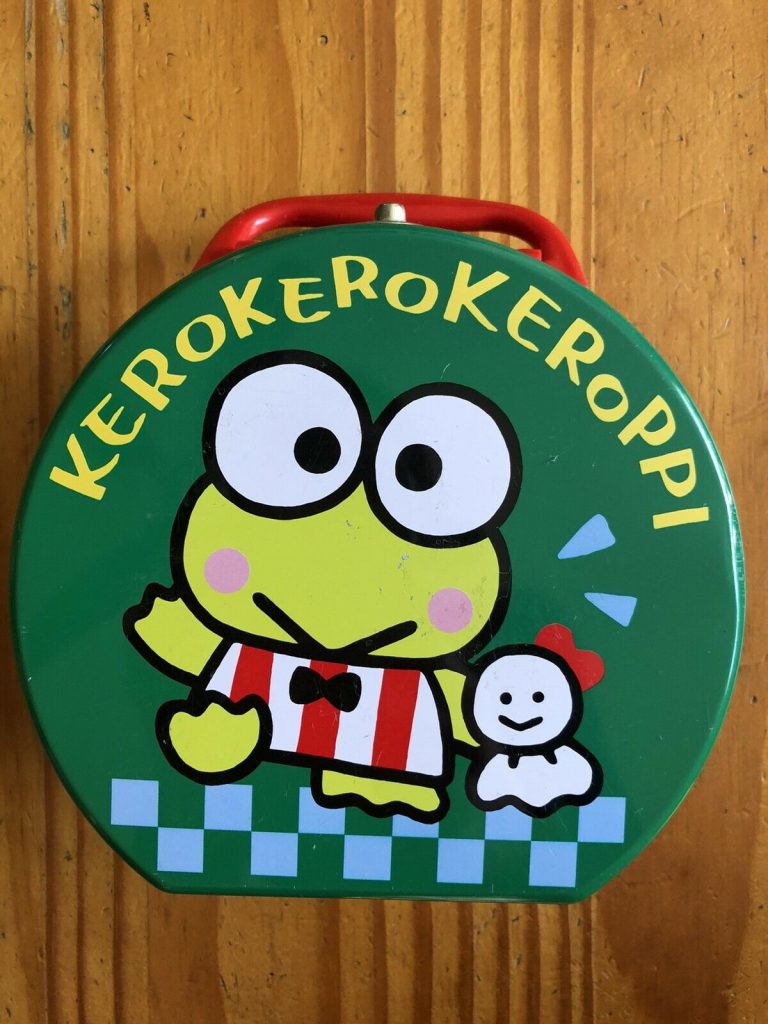
KEROPPI: By the early 2000s Hello Kitty, a 1970s Japanese media franchise (from the company Sanrio), had grown to include clothing, accessories, toys, games, books, manga, anime series, and music albums. Another popular character also created by Sanrio is Keroppi, the adventure-loving frog. Introduced in 1988, Keroppi is a kind of free-spirit frog, I guess — but like every Hello Kitty character one senses one’s sentimentality being manipulated here…
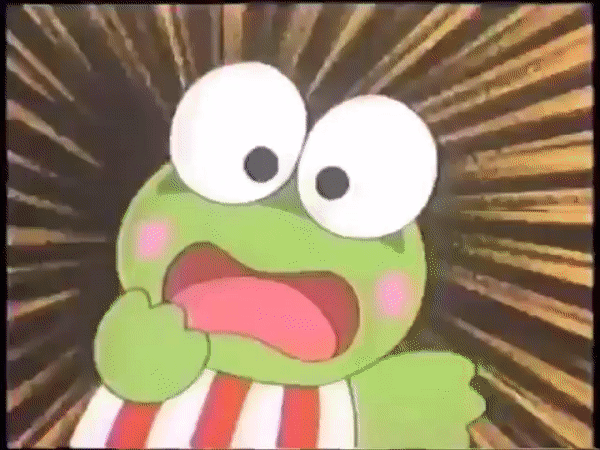
Keroppi has appeared in video games, including Kero Kero Keroppi no Bouken Nikki, Kero Kero Keroppi no Daibouken, and Sanrio World Smash Ball!. He has also appeared in several animated series, such as Keroppi and Friends, Hello Kitty’s Animation Theater, The Adventures of Hello Kitty and Friends, and Hello Kitty and Friends Supercute Adventures.
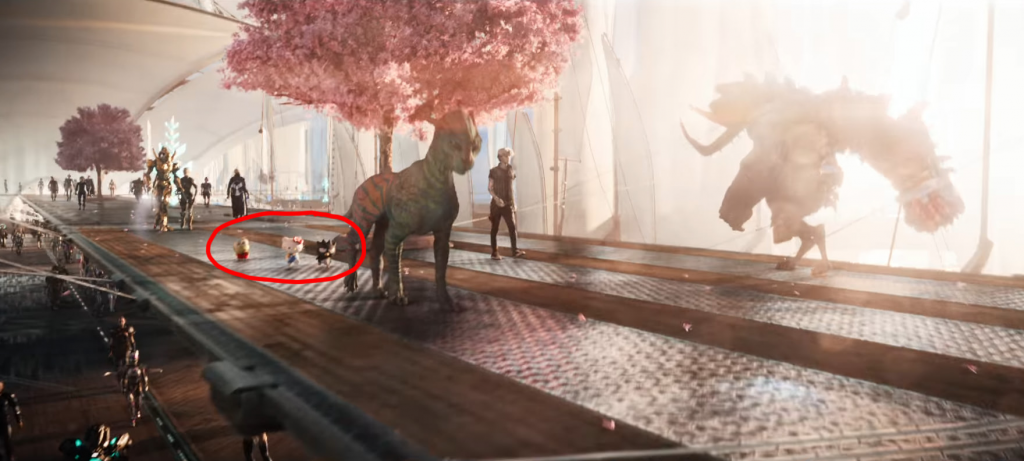
Fun fact: Keroppi cameos with Hello Kitty and Badtz-Maru in the first few minutes of the 2018 film Ready Player One. One of the most recursive-est of all recursive cultural productions.
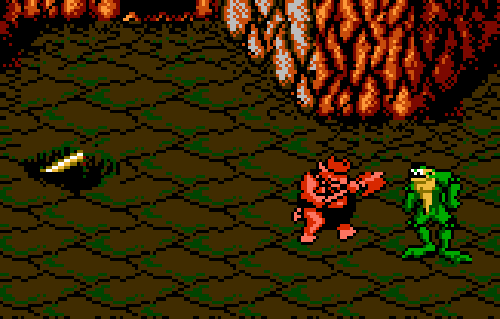
RASH, ZITZ, and PIMPLE: The beat ’em up videogame Battletoads was introduced in 1991. Starring three anthropomorphic (bad-ass, action hero) toads — Rash, Zitz, and Pimple — the series was created to rival the Teenage Mutant Ninja Turtles games series. Sequels include Battletoads in Battlemaniacs (1993), Battletoads/Double Dragon (1993), the ultra-violent arcade game Battletoads Arcade (1994), and the 2020 Xbox game Battletoads.
Battletoads spun off a half-hour animated television special in 1992; although intended as the pilot for a full-fledged series, it wasn’t picked up. In fact, the show was included on Topless Robot’s 2008 list of the five “worst one-shot TV cartoons ever made.”
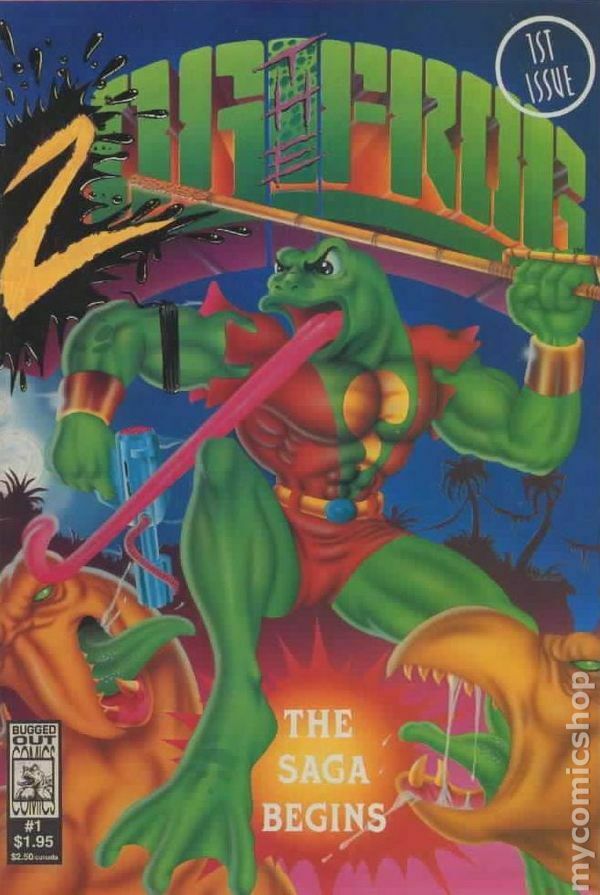
ZOG THE FROG: I haven’t read this 1993 comic — by Stanley White — about a (badass) muscle-bound amphibian who rides a giant tortoise and seeks to free a watery kingdom from the machinations of the evil toad king Wart and his army of lizards.
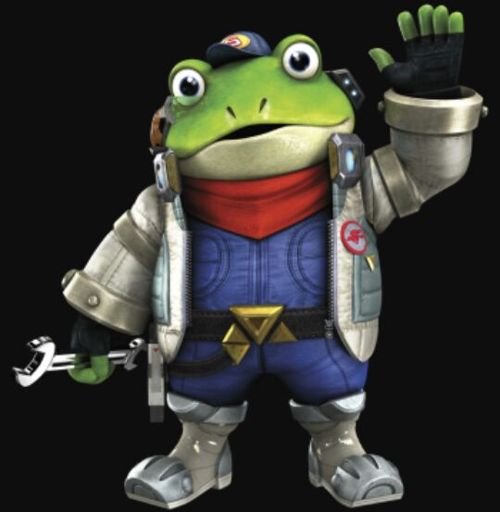
SLIPPY TOAD: Slippy Toad (スリッピー・トード, Surippī Tōdo) is a character from the Star Fox video games published by Nintendo. A mechanic and inventor, he is both a free spirit (laid-back, goofy) and a badass (his mechanical know-how is second to none).
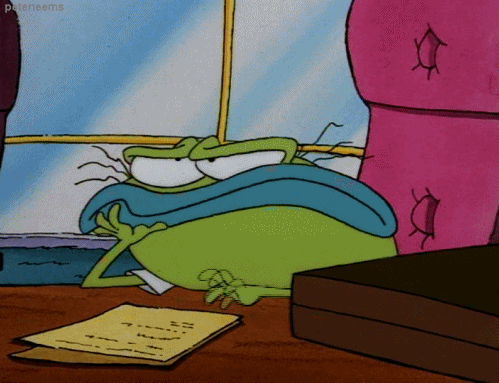
MR. BIGHEAD: Edward Bighead is a character in the cartoon series Rocko’s Modern Life (c. 1993) and the comic book of the same name. An anthropomorphic cane toad, he lives next door to the main character of the show, Rocko, whom he vehemently dislikes. He is a figure of fun.
I used the word “metastasized” at the top of this post, and during the Nineties we’ll encounter a bewildering assortment of palimpsestic pop-culture frogs.
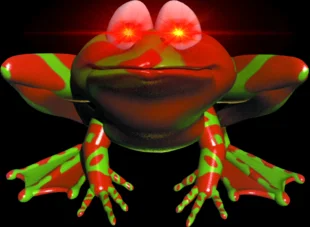
WINKY: In Donkey Kong Country, a Super Nintendo Entertainment System game released in 1994, we are introduced to Winky — namesake of Winky’s Walkway. Fun fact: He has the ability to jump higher than the Kongs, which is useful for reaching collectibles such as Bananas or Extra Life Balloons.
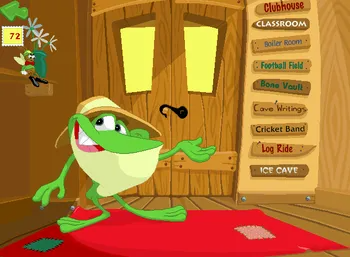
C.J. FROG: The educational media franchise JumpStart, consisting mostly of educational games, showed up in the early Nineties. The character CJ is generally depicted as a badass adventurer and explorer. Also see: Leapfrog.
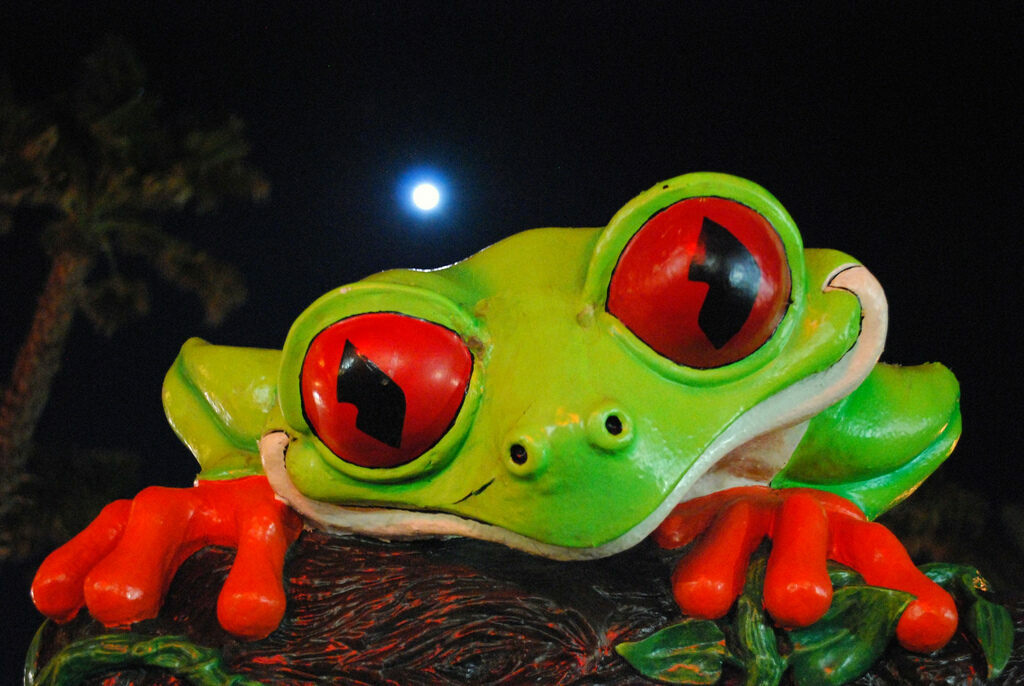
CHA! CHA!: The first Rainforest Cafe (a jungle-themed restaurant chain) opened in the Mall of America in Bloomington, Minnesota, in 1994. One of its key mascots is Cha! Cha!, the red-eyed tree frog.
File under PROPHETIC FROGS, perhaps, suggests Adam McGovern. Signaling the state of environmental urgency and serving as a totem of idyllic naturalism? (Cf. Rainforest Alliance logo.) However, this series is dedicated to anthropomorphized pop-culture frogs, so Cha! Cha! and other prophetic frogs are not within our purview….
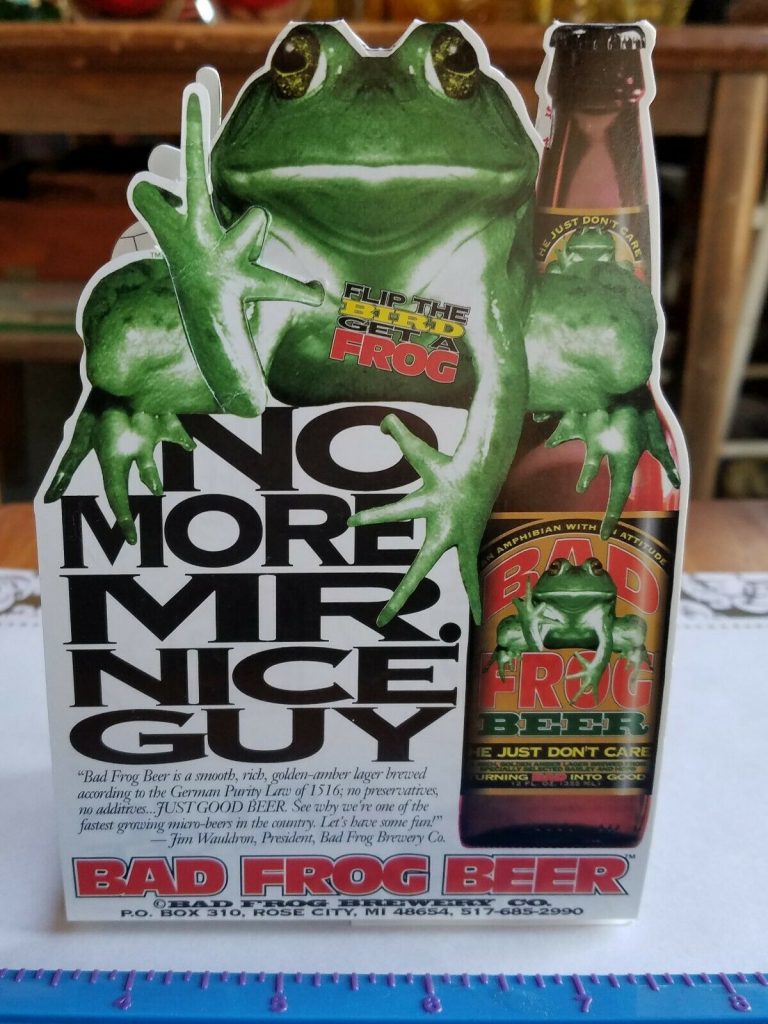
A badass beer mascot.
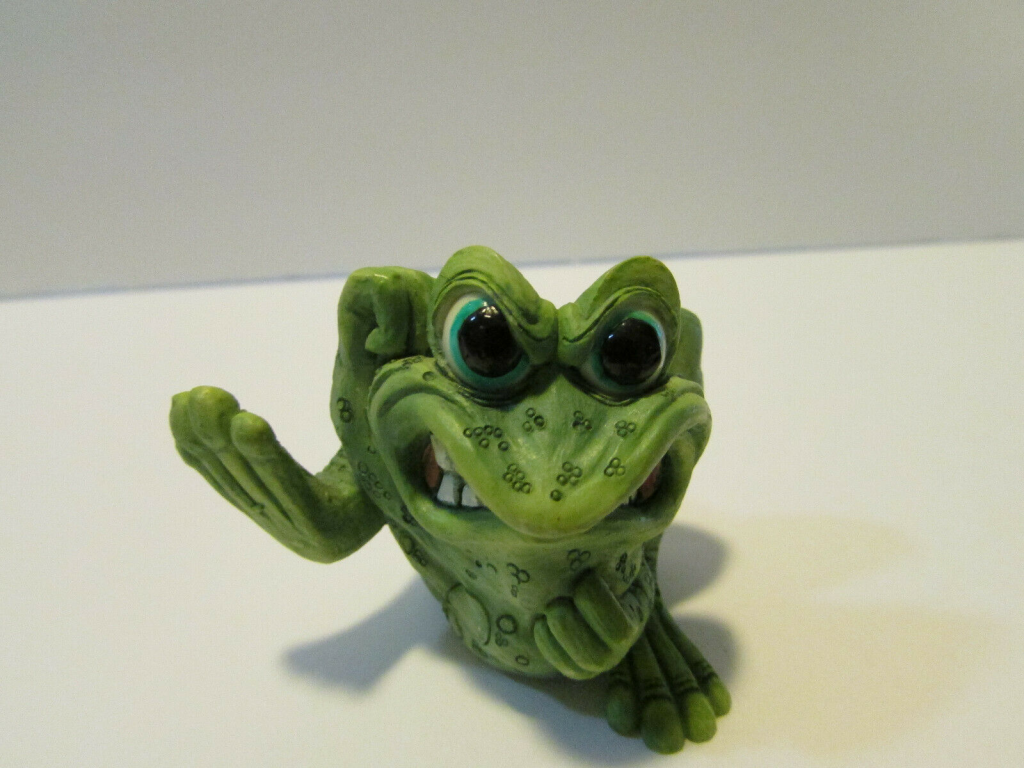
SPROGZ: Like Sears in this installment’s previous “leg,” Hallmark latched on to the dominant frog paradigm of this era only after it had already flourished for a decade. The Sprogz figurines (launched c. 1994) are bogus badassery and ’tude in collectible form.

MICHIGAN J. FROG: We’ve met this rapscallion before (see the 1934–1963 “leg” of this installment). In 1995, after changes in television regulation meant TV networks could produce more of their own programming, Time Warner teamed up with the Tribune Company to create The WB. That year, “Michigan J. Frog” (he was originally unnamed) was taken out of retirement and thrust into a cartoon titled recursively “Another Froggy Evening.” From 1995 through 2006, he’d serve as the WB Television Network’s mascot.
There was even a voodoo-like ritual. The WB’s first night of programming (on January 11, 1995) began with Bugs Bunny and Daffy Duck wondering which one of them would pull the switch to launch the WB. The camera then panned over to Chuck Jones drawing Michigan; when Jones finished, the regalvanized Michigan came to life and pulled the switch.

BUD, WEIS & ER: The lifelike puppet frogs “Bud”, “Weis”, and “Er” first appeared in a TV commercial for Budweiser during Super Bowl XXIX in 1995. Adweek has since called it one of the “most iconic alcohol campaigns in advertising history.”
Fun fact: In a 1997 Simpsons episode, “The Springfield Files,” the three frogs say their names… and are then eaten by an alligator, who growls “Coors.”
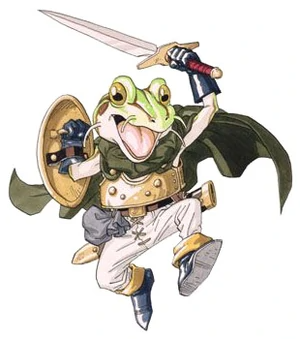
KAERU: In Chrono Trigger, a 1995 role-playing videogame released for the Super Nintendo Entertainment System in 1995, Kaeru is a badass knight’s squire who has been transformed into an anthropomorphic frog.
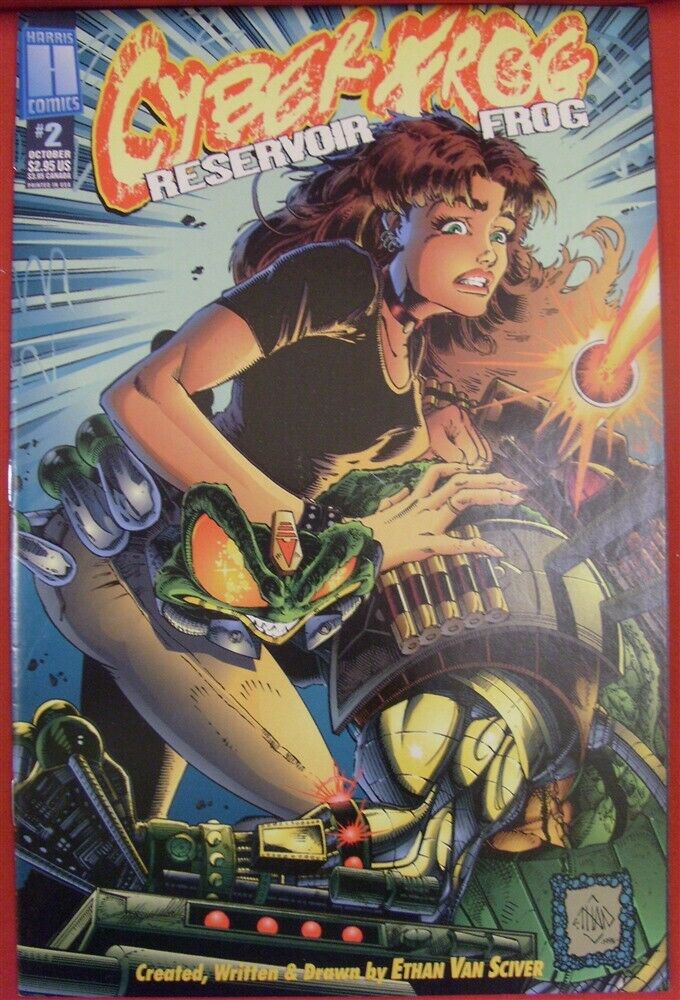
CYBERFROG: DC and Marvel comics artist Ethan Van Sciver, who is best known now as a central figure in Comicsgate — he and his fellows claim that diversity and progressivism in comics have led to a decline in quality and sales — got his start in 1994 with Cyberfrog. I haven’t read it, but… not sure this guy is an authority on quality comics.
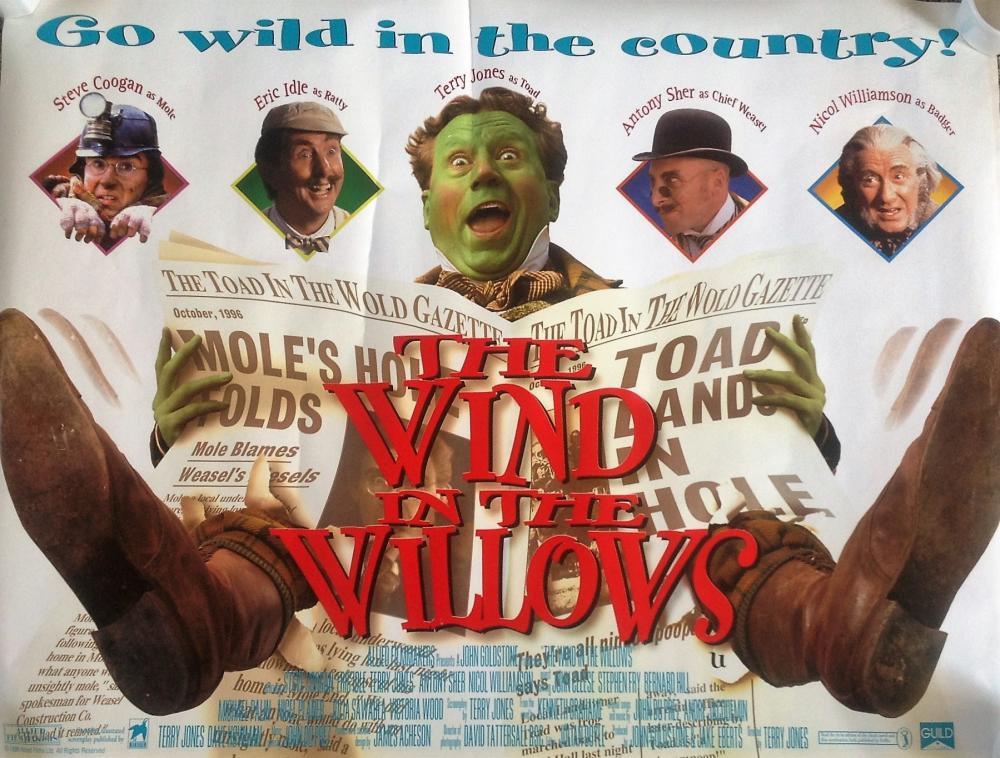
LIVE-ACTION MR TOAD: In 1996 Monty Python’s Terry Jones gave us a live-action adaptation of The Wind in the Willows, starring Steve Coogan as Mole, Eric Idle as Rat, and Jones as Mr. Toad. A recursive take not only on Kenneth Grahame’s already much-revived franchise but on Monty Python, too…. That said, I’ve heard reports that it’s actually a pretty good movie. True?
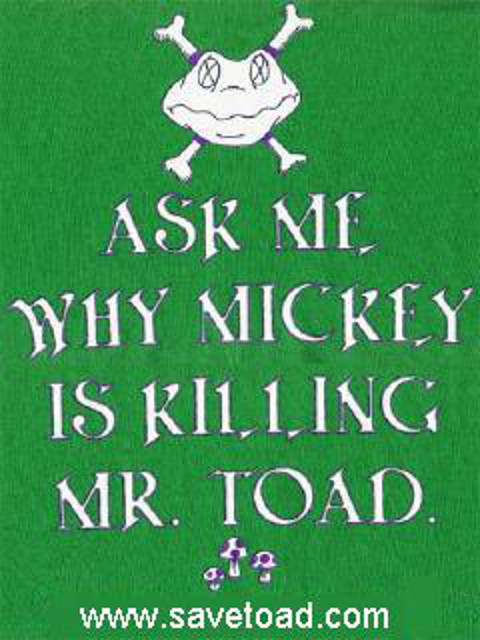
In 1997, rumors began to spread that an attraction based on Winnie-the-Pooh would replace the iconic Mr. Toad’s Wild Ride at Florida’s Disney World. Protests spread around the country, as well as green t-shirts with the slogan, “Ask me why Mickey is killing Mr. Toad.” I want one of these t-shirts.
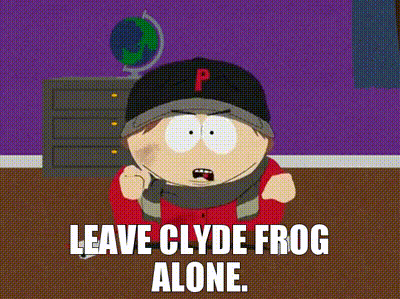
CLYDE FROG: In a 1998 episode of South Park, titled “Cartman’s Mom is a Dirty Slut,” we meet Eric Cartman’s favorite stuffed animal, Clyde Frog. (Others: Rumpertumskin, Polly Prissypants, Peter Panda, Muscleman Marc.) In the episode “Die Hippie, Die,” Cartman says a tearful farewell to Clyde before he embarks on a dangerous mission.
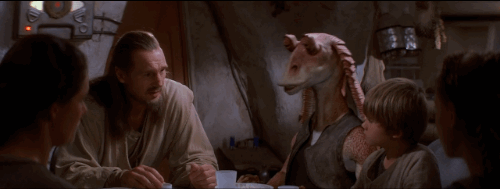
JAR JAR: Jar Jar Binks is a character created by George Lucas for Star Wars: Episode I – The Phantom Menace (1999) and subsequent installments in the series. Jar Jar is a Gungan — an amphibious sentient species, obviously evolved from frogs. He has a kind of Muppet-ish voice, and is a sort of free-spirited fellow, a reluctant badass — was he intended to be a Kermit-esque figure in the Star Wars universe?
Star Wars fans were very much not into this character.
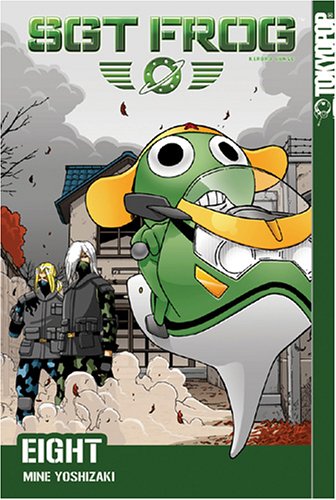
SGT. FROG: Known in Japan as Keroro Gunso, Sgt. Frog was a manga series launched in 1999. The story follows the attempts of a platoon of frog-like alien invaders to conquer Earth. Sergeant Keroro, the titular character, is the leader of the platoon — but finds himself at the mercy of a human family.
The series was adapted into an anime television series that ran from 2004–2011. (A second, shorter series ran in 2014.)
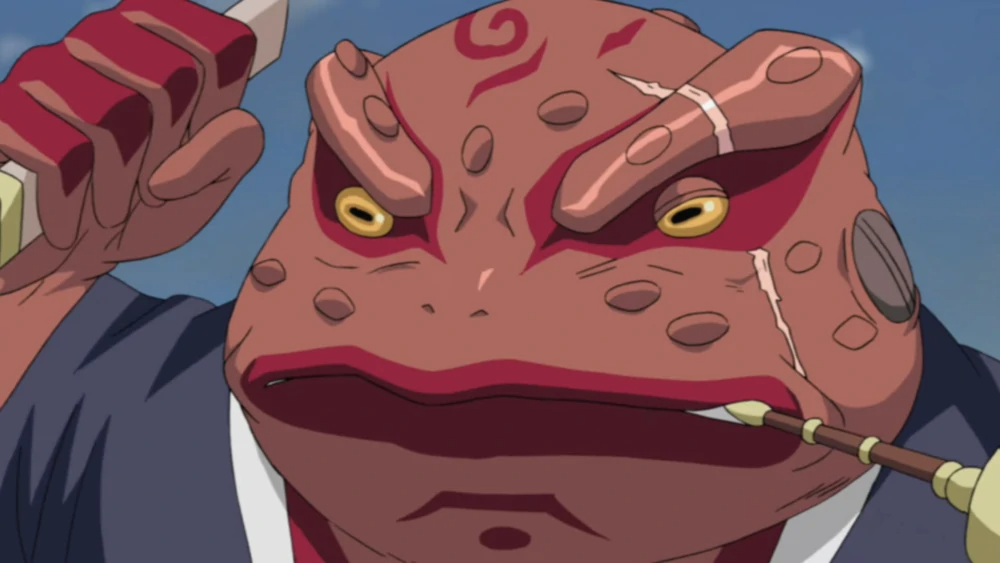
BUNTA: Naruto, a Japanese manga series written and illustrated by Masashi Kishimoto, ran in Shōnen Jump from 1999–2014. It was adapted into a TV series produced by Pierrot and Aniplex, which broadcast 220 episodes from 2002– 2007; the English-language version of the series aired from 2005–2009. It was a big hit in my household, though some years later.
Gamabunta (ガマブン太), also referred to as just Bunta, is the chief toad of Mount Myōboku; a giant, he can be summoned into our plane of existence by powerful warriors. He appears in the first chapter of the Naruto series, and the first episode of the TV show. He is grumpy, stubborn, and apathetic; although he appears villainous (and uses gangster slang) he is sympathetic to Naruto.
Fun fact: The character’s name comes from the Japanese actor Bunta Sugawara, best-known for his role as a Yakuza member in the Battles Without Honour and Humanity series of films.
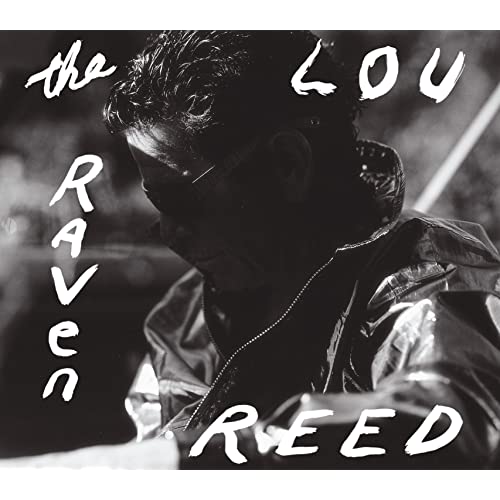
The Raven is the nineteenth solo album by Lou Reed, released in 2003. It is a concept album, recounting the short stories and poems of Edgar Allan Poe. One of the songs — “Hop Frog” — features vocals from David Bowie. Thanks for pointing this artifact out to me, Adam McGovern.
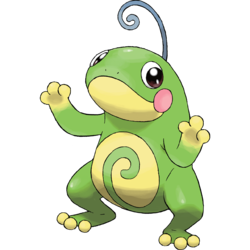
The Pokémon character Politoed (ニョロト, Nyorotono) evolves from Poliwhirl when traded while holding a King’s Rock. It is one of Poliwag’s final forms, the other being Poliwrath. Check him out in action in the “Outrageous Fortunes” episode of Pokémon (broadcast in Japan on May 9, 2002; in the US on May 10, 2003).
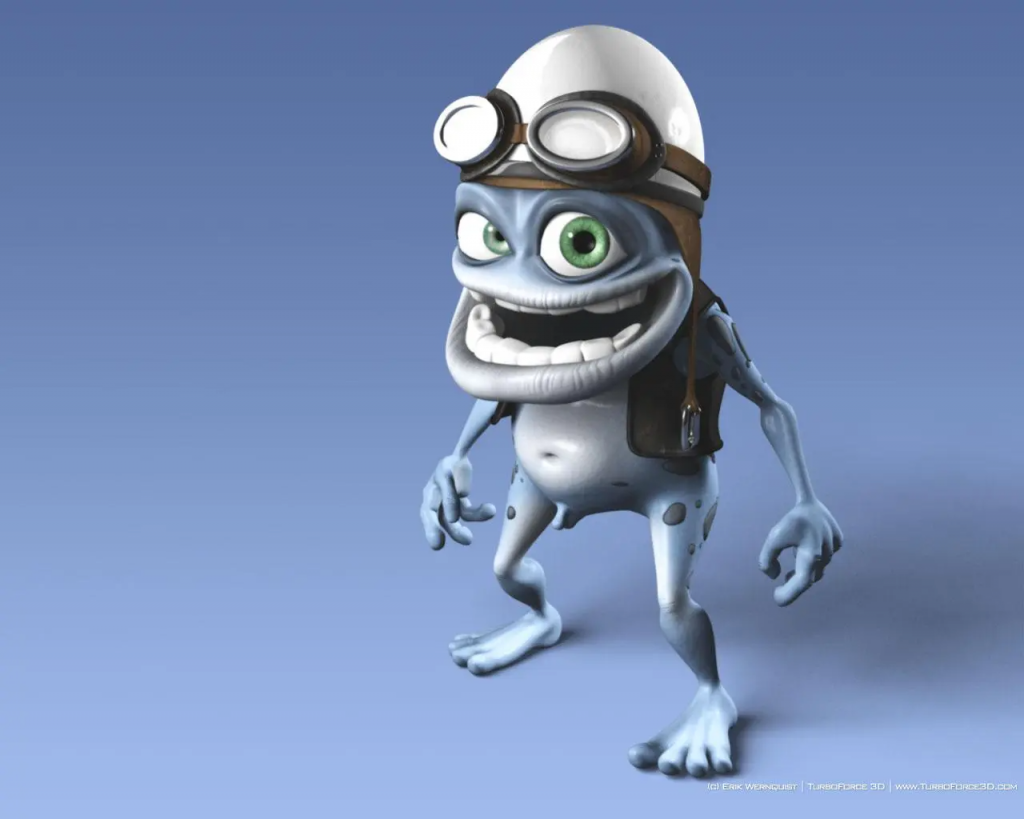
CRAZY FROG: In 1997, a teenaged Swede named Daniel Malmedahl recorded himself imitating a friend’s moped engine (and sped it up). In 2003, his friend Erik Wernquist used the sound to accompany a CGI-animated character he’d developed, Crazy Frog (original name: The Annoying Thing). The Crazy Frog went viral, particularly after he released a remix of “Axel F” (from the soundtrack of Beverly Hills Cop); the remix became the most popular song in most of Europe. Crazy Frog’s album Crazy Frog Presents Crazy Hits and subsequent releases were also huge successes. Merchandise, toys and more followed.
Thanks for reading the BESTIARY series’ FROG installment. We’ll stop at 2003. Note, however, what the future holds in store…

When Matt Furie published his Boys Club comic book on Myspace in 2005, thus introducing the internet to Pepe the Frog, the poor fellow couldn’t have dreamed of how this figure would be misused….
PS: Also in 2005, Kermit the Frog appears in a BMW commercial.
INTRODUCTION by Matthew Battles: Animals come to us “as messengers and promises.” Of what? | Matthew Battles on RHINO: Today’s map of the rhinoceros is broken. | Josh Glenn on OWL: Why are we overawed by the owl? | Stephanie Burt on SEA ANEMONE: Unable to settle down more than once. | James Hannaham on CINDER WORM: They’re prey; that puts them on our side. | Matthew Battles on PENGUIN: They come from over the horizon. | Mandy Keifetz on FLEA: Nobler than highest of angels. | Adrienne Crew on GOAT: Is it any wonder that they’re G.O.A.T. ? | Lucy Sante on CAPYBARA: Let us gather under their banner. | Annie Nocenti on CROW: Mostly, they give me the side-eye. | Alix Lambert on ANIMAL: Spirit animal of a generation. | Jessamyn West on HYRAX: The original shoegaze mammal. | Josh Glenn on BEAVER: Busy as a beaver ~ Eager beaver ~ Beaver patrol. | Adam McGovern on FIREFLY: I would know it was my birthday / when…. | Heather Kapplow on SHREW: You cannot tame us. | Chris Spurgeon on ALBATROSS: No such thing as a lesser one. | Charlie Mitchell on JACKALOPE: This is no coney. | Vanessa Berry on PLATYPUS: Leathery bills leading the plunge. | Tom Nealon on PANDA: An icon’s inner carnivore reawakens. | Josh Glenn on FROG: Bumptious ~ Rapscallion ~ Free spirit ~ Palimpsest. | Josh Glenn on MOUSE.
